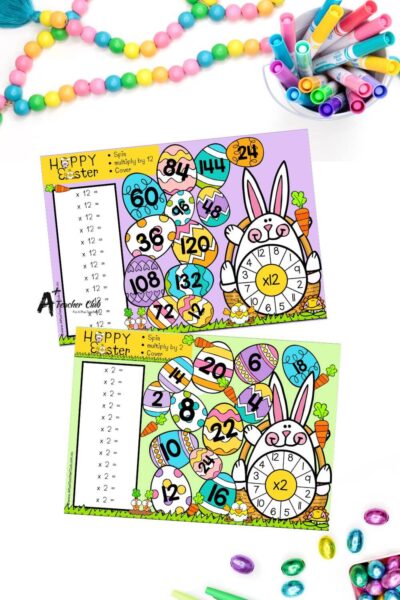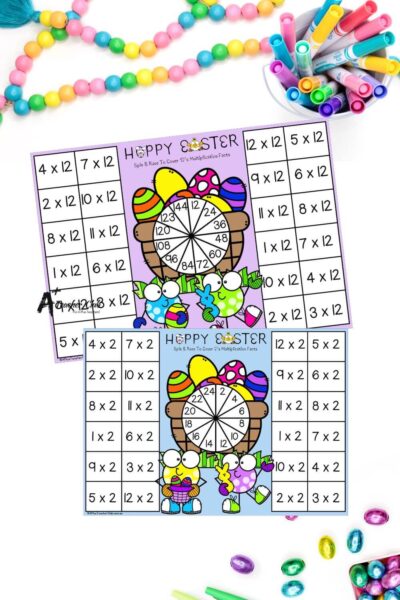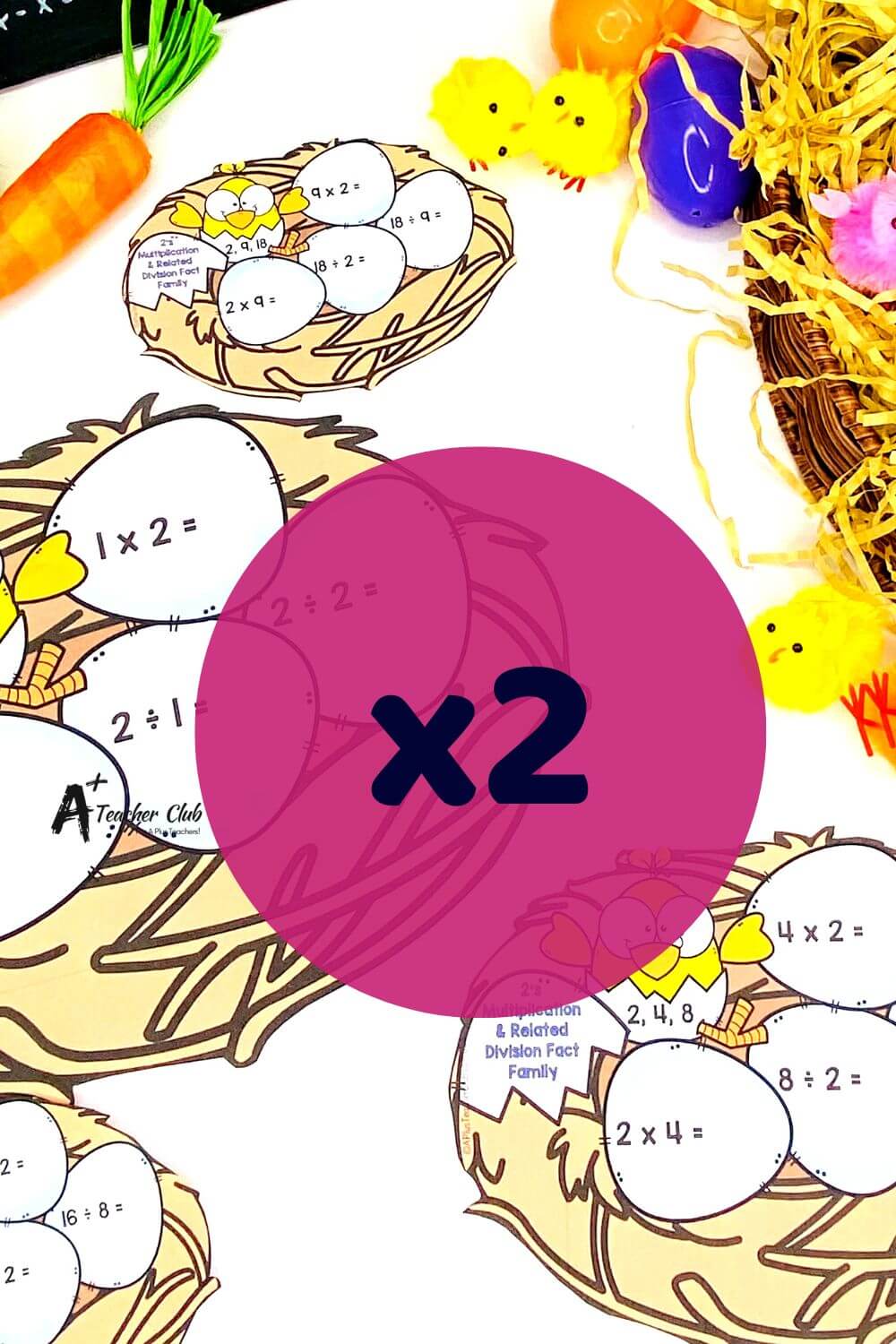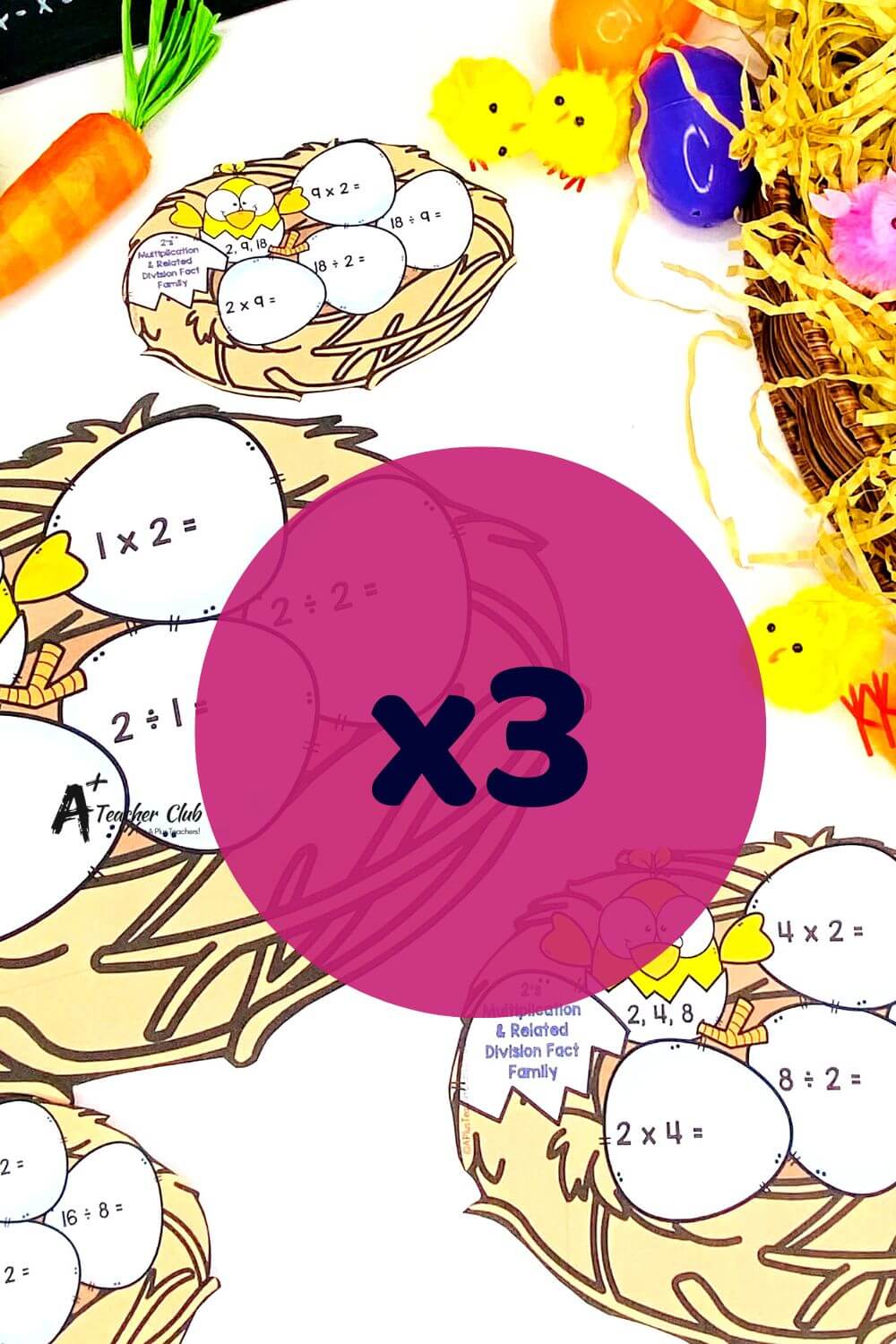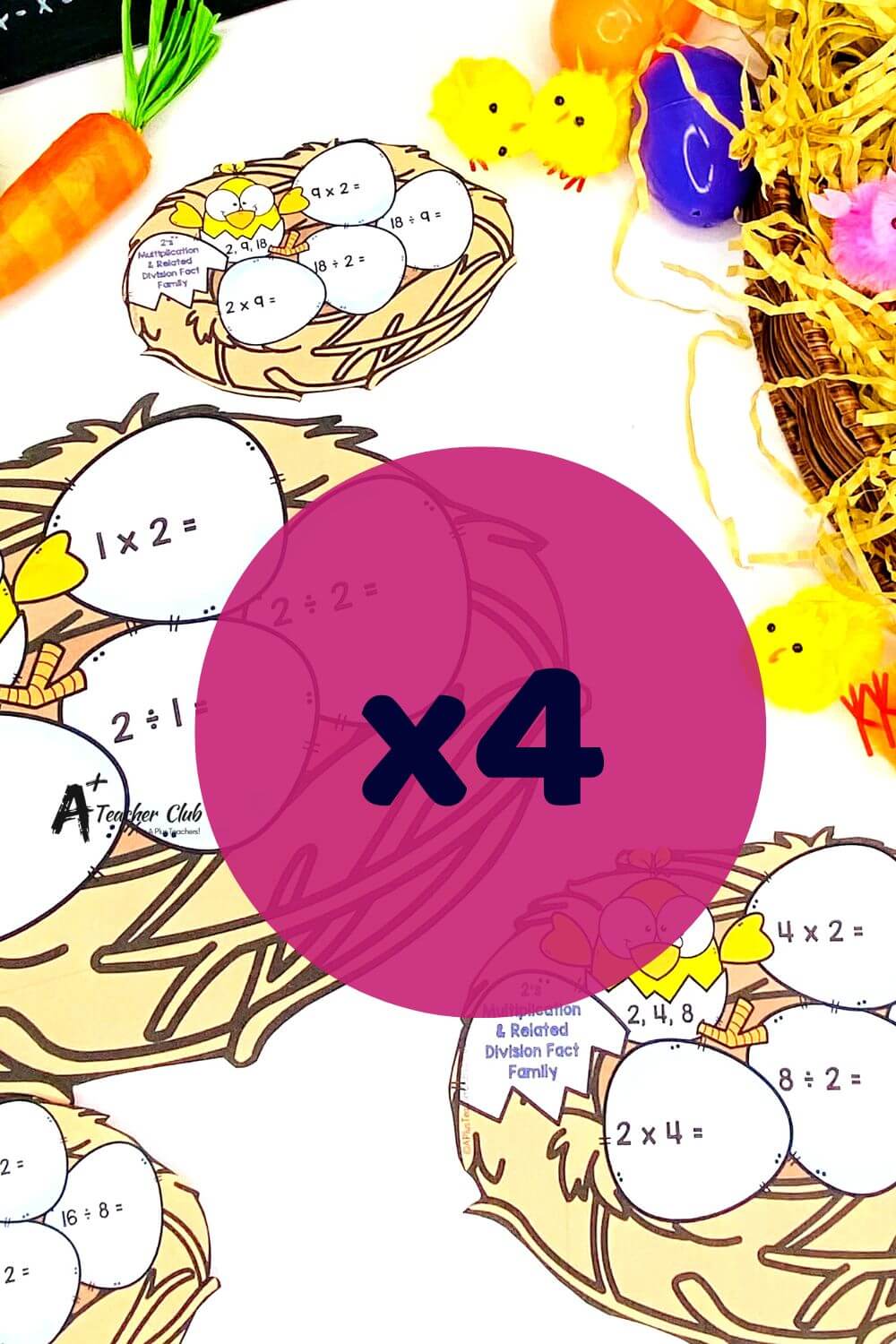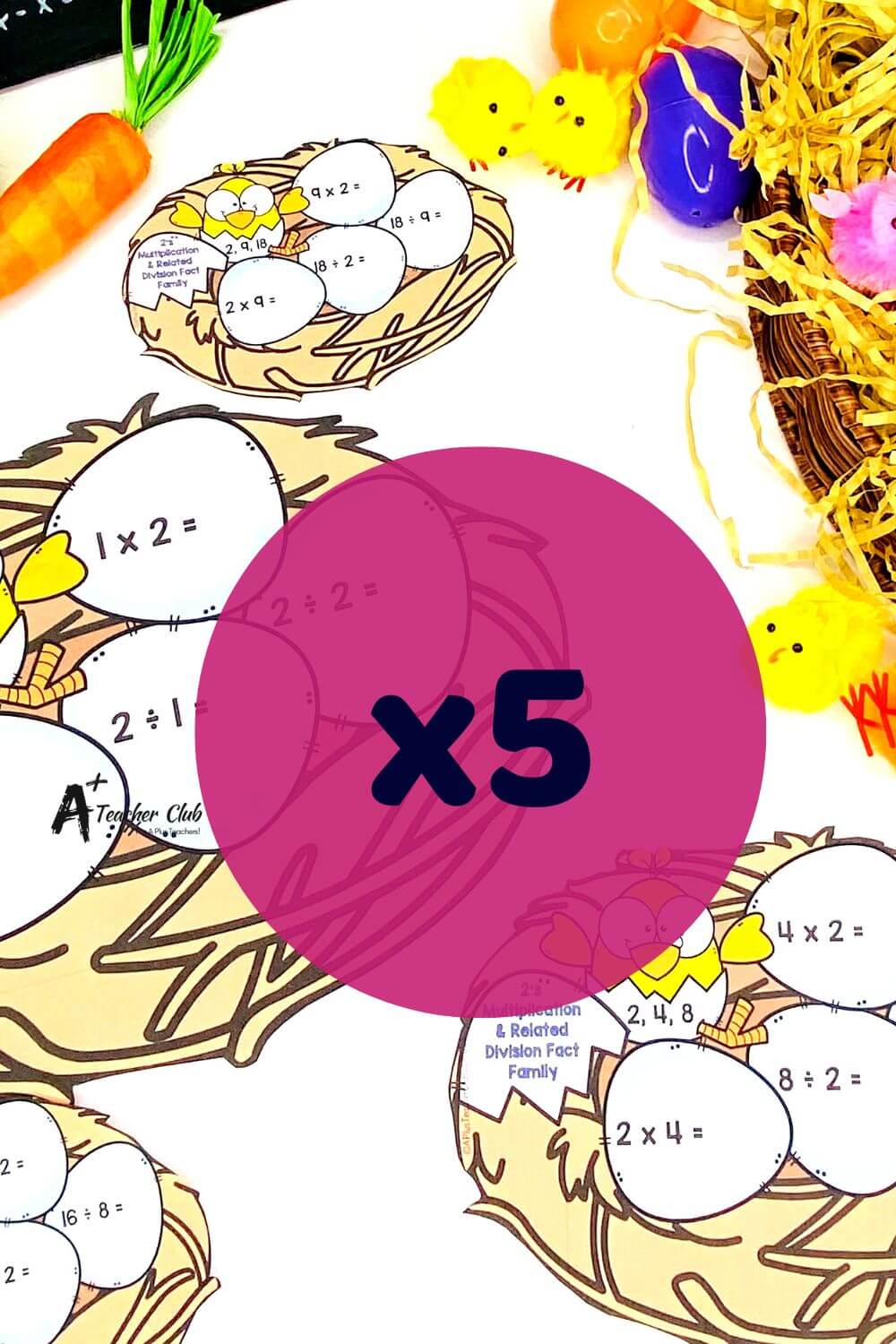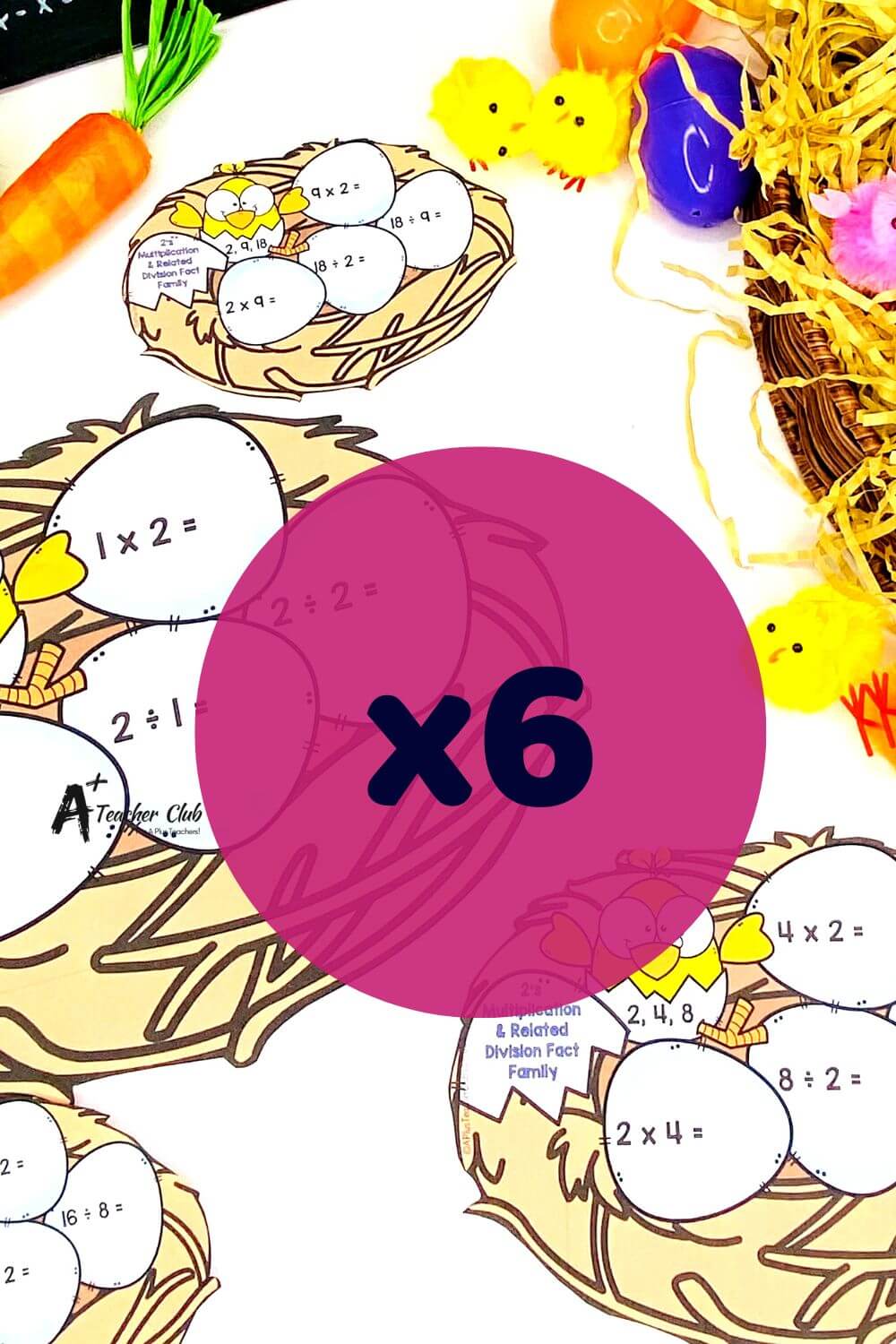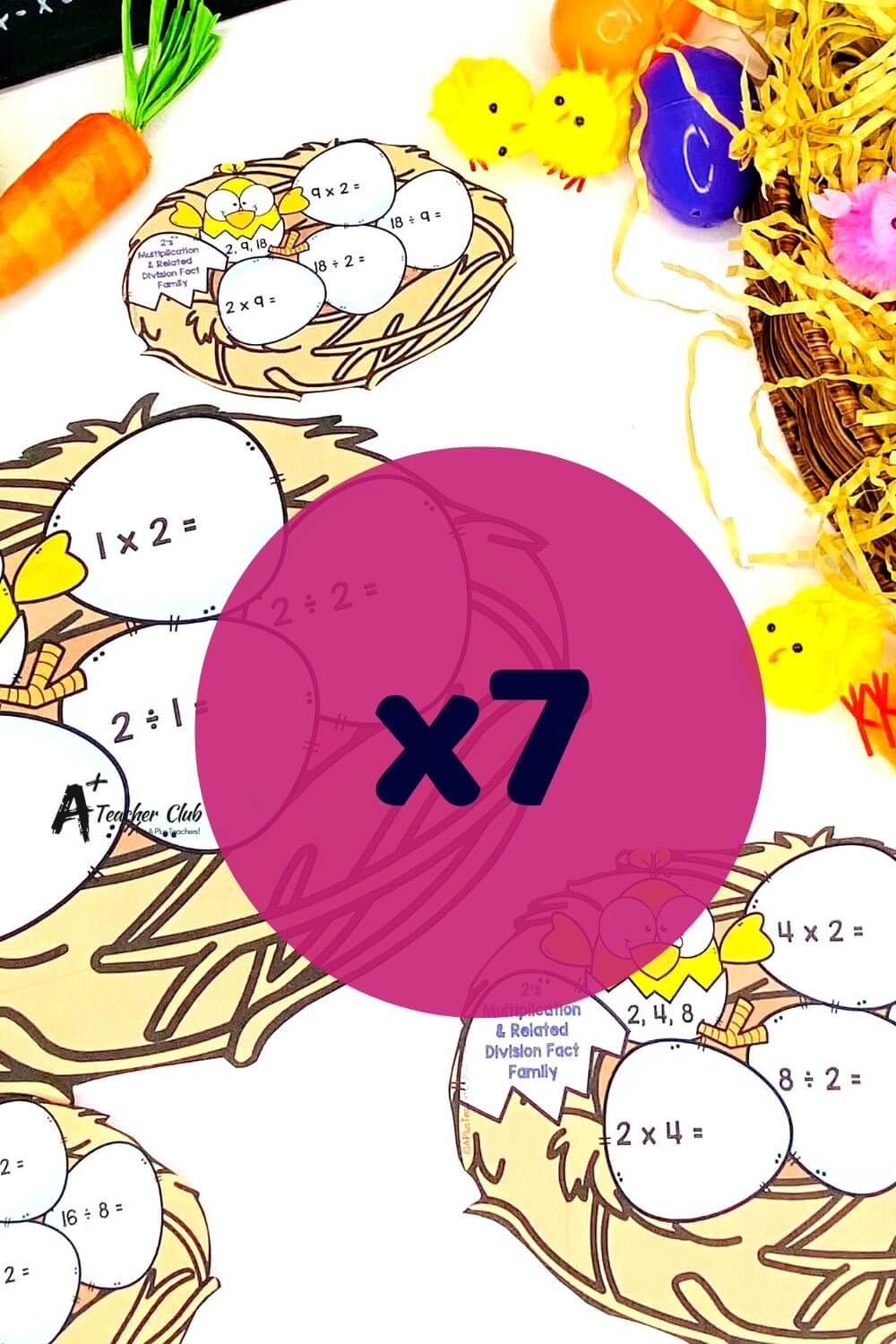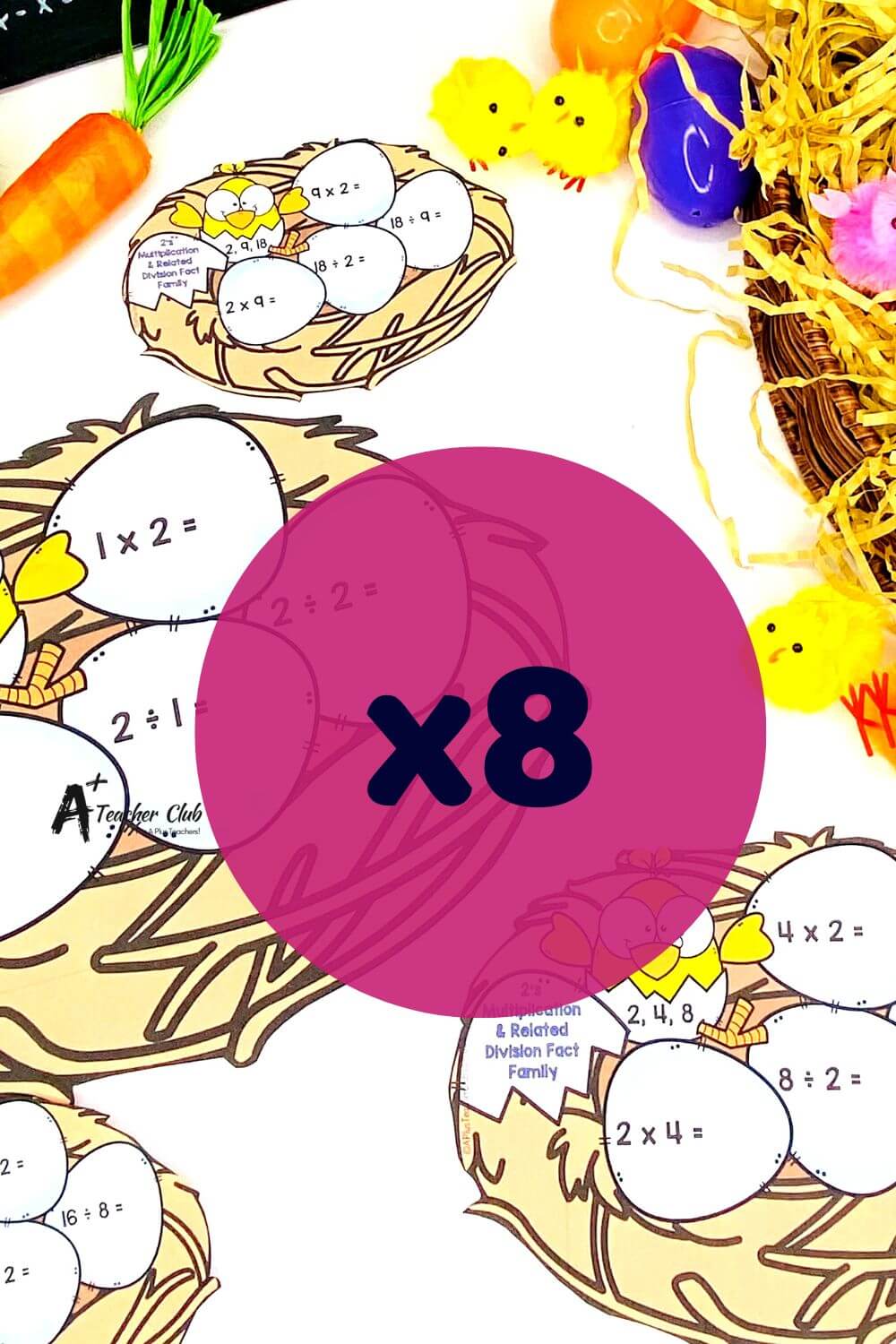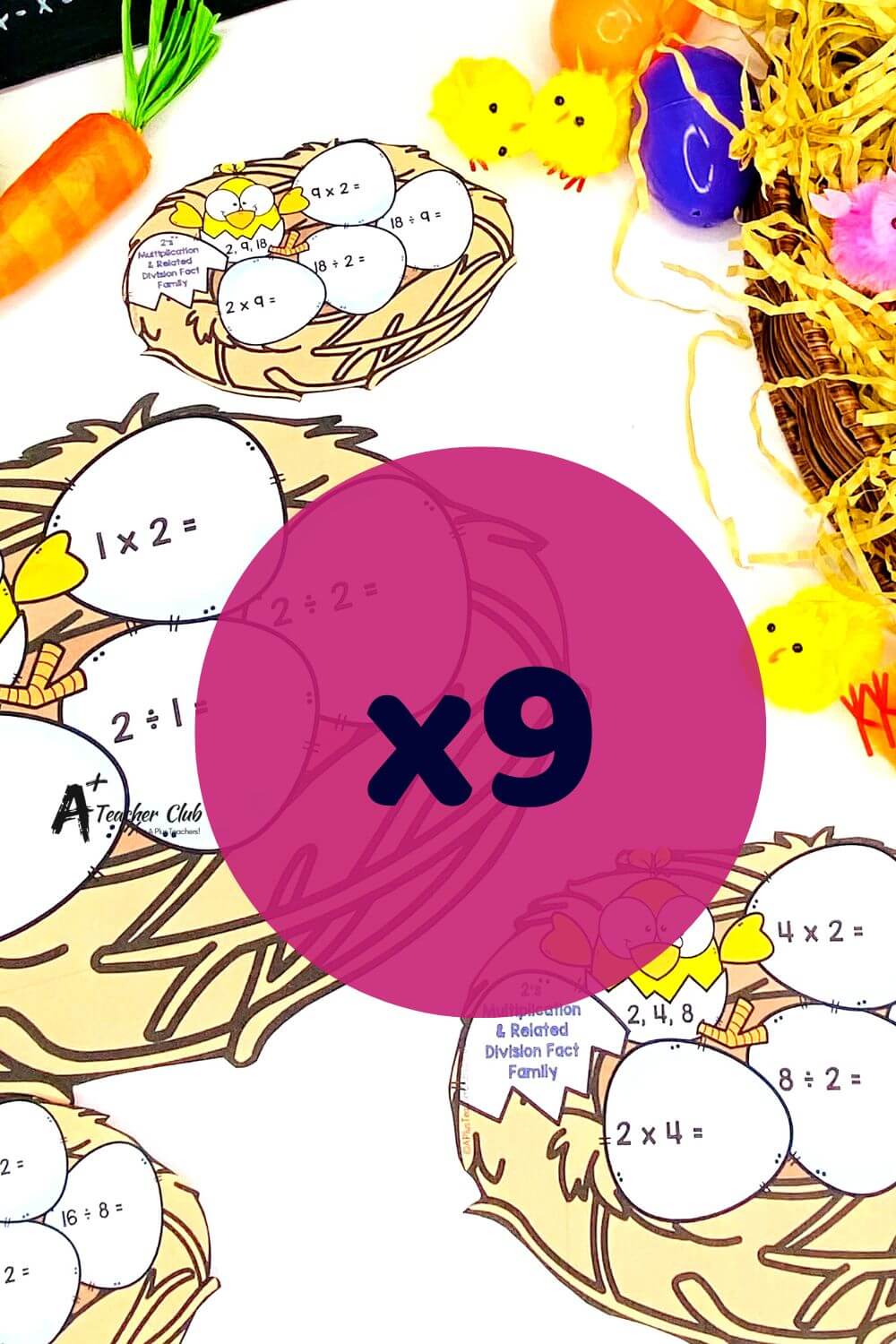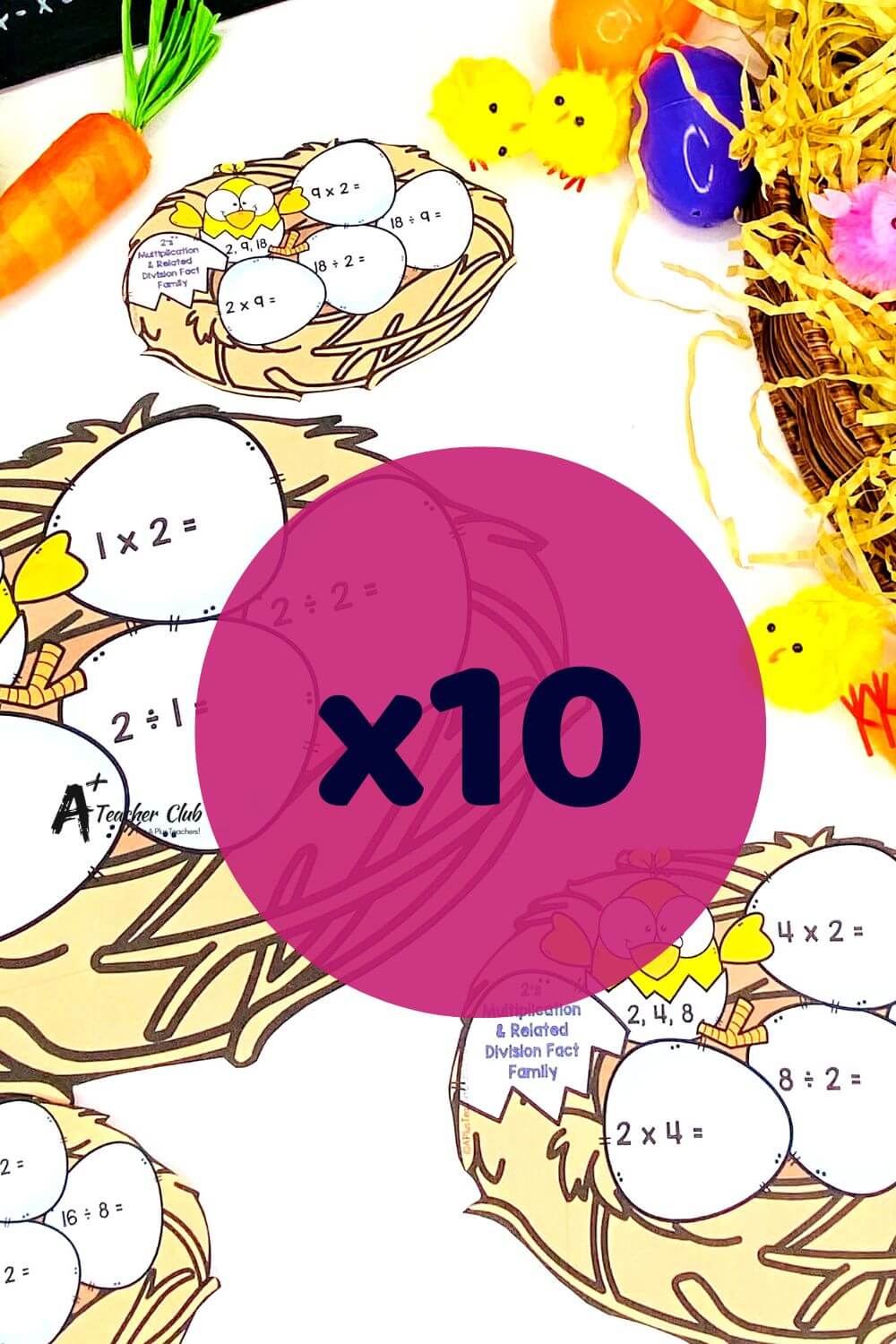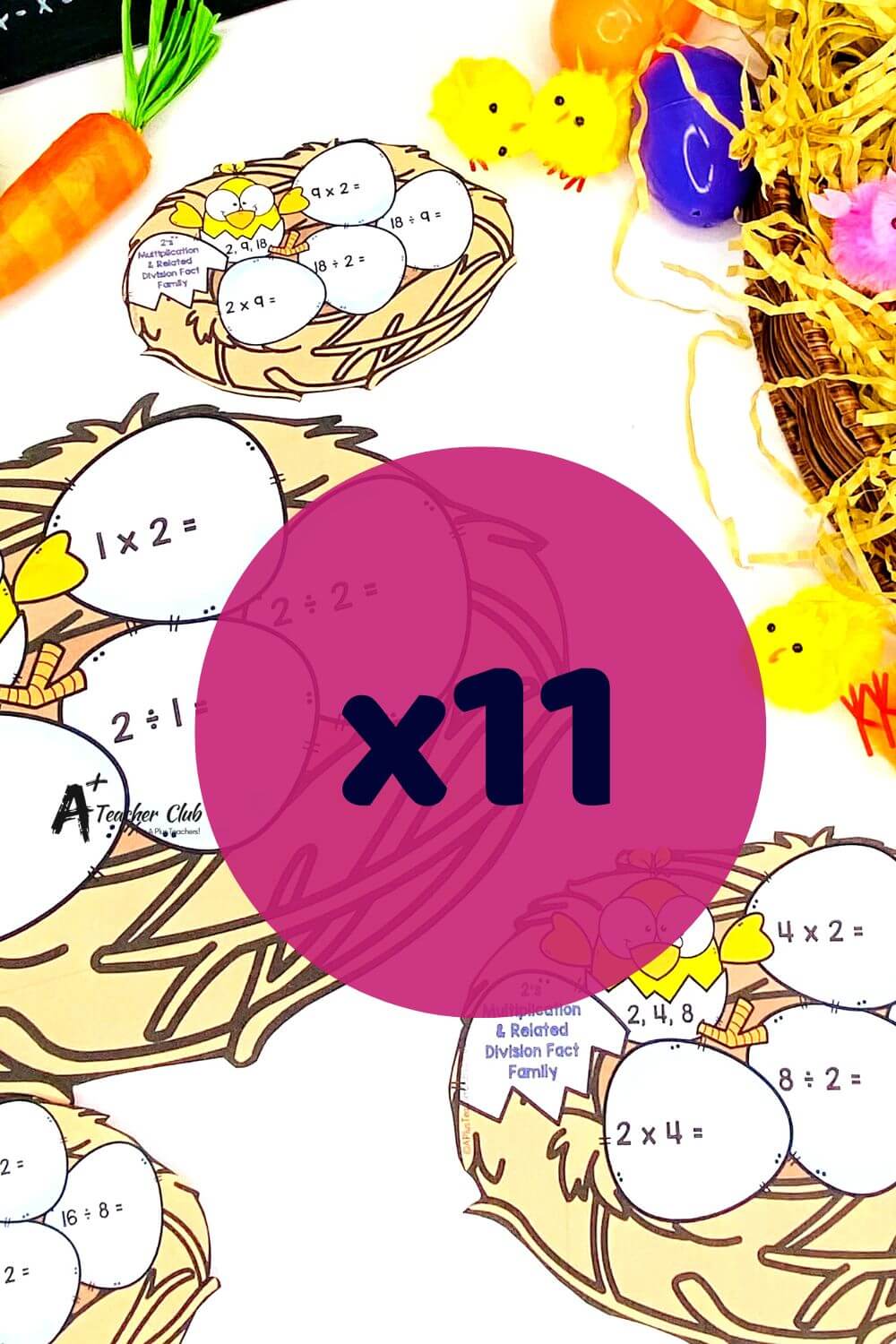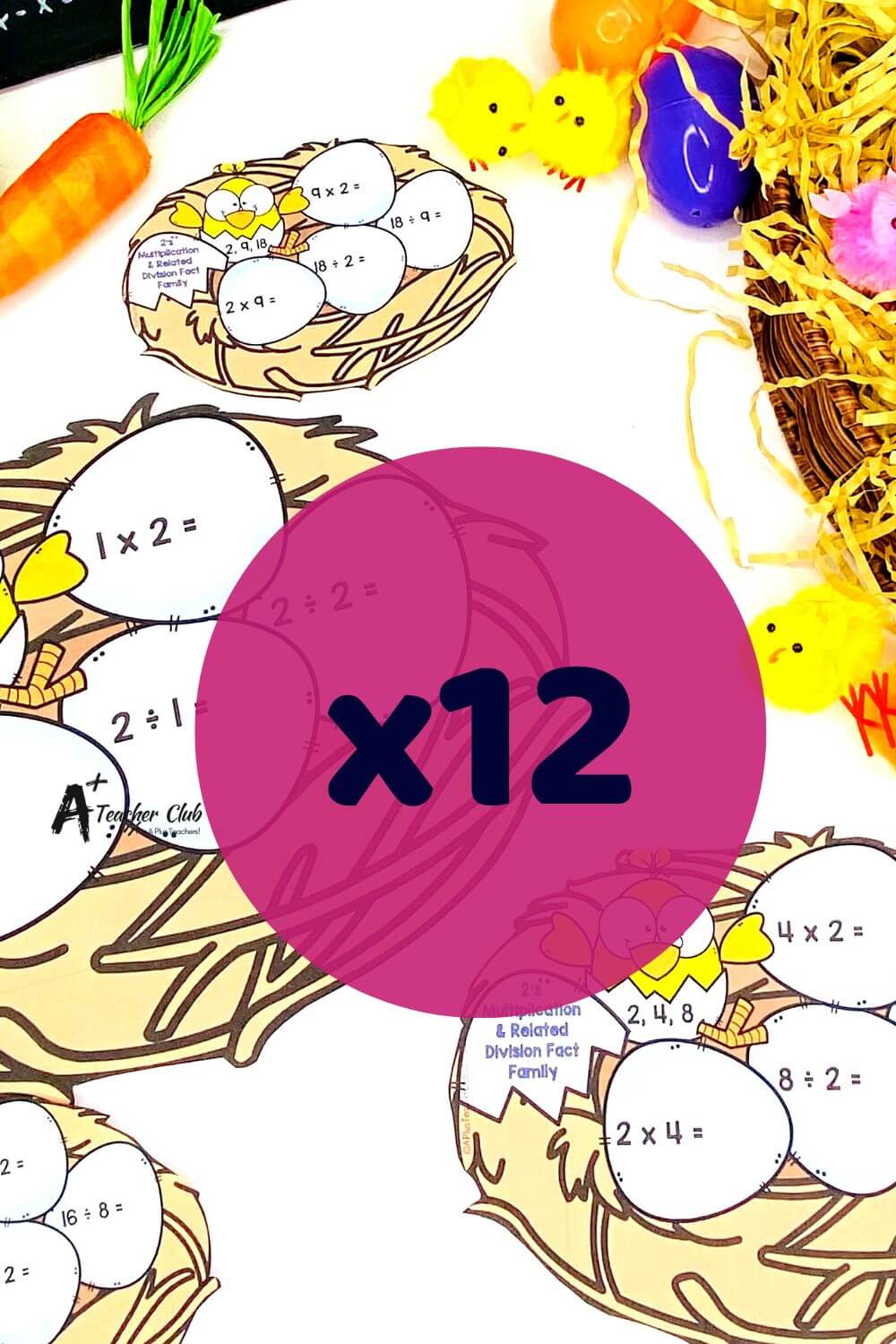Easter Maths -Multipliaction Facts Activities
Easter Printables
Inject Fun into Learning This Easter
As Easter approaches, it’s the perfect time to enhance your math lessons with our engaging Easter Maths – Multiplication and Division Facts Activities. These delightful printables, adorned with bunnies, chicks, and eggs, not only make learning multiplication and division an enjoyable adventure but also help embed key mathematical concepts in an engaging way.
Transform your classroom into a vibrant learning environment where students are excited to explore, solve challenges, and understand the intrinsic link between multiplication and division.
Essential Multiplication Basics: What Students Should Know
Before jumping into our exciting multiplication and division activities, it’s crucial for students to grasp the foundational concepts of multiplication as repeated addition and division as its inverse.
Understanding these concepts sets the stage for more complex problem-solving. Students should be comfortable with number facts up to 10 and have skills in skip counting by 2s, 5s, and 10s.
This foundation is essential for enabling them to tackle higher tables and related division facts with confidence and ease.
Common Errors and Misconceptions in Learning Multiplication and Division
Multiplication and division are critical math skills, but they are also sources of common errors and misconceptions for many students. Here are a few typical pitfalls and why they happen:
- Reversal Errors in Multiplication: Students often think that multiplication facts can be reversed, which is true, but this concept doesn’t directly translate into division, leading to confusion.
- Division as Mere Sharing: Some students misunderstand division merely as sharing equally, not connecting it to multiplication as determining how many groups of a number can be made.
- Table Memorisation Without Conceptual Understanding: Rote memorisation of times tables without understanding the relationship between multiplication and division can lead to difficulties in applying these skills to solve problems.
The Importance of Teaching Multiplication and Related Division Facts Together
Teaching multiplication and division facts simultaneously is beneficial because it helps students see the natural relationship between these operations.
Understanding that division is essentially the process of determining how many times one number is contained within another reinforces their grasp of multiplication as repeated addition.
For example, if a student knows that 8 x 5 = 40, they can more easily understand that 40 ÷ 5 = 8.
This dual approach not only deepens understanding but also enhances problem-solving skills and mathematical fluency.
Strategic Learning: Optimal Order for Teaching Times Tables and Division Facts
Implementing a strategic teaching order for both multiplication and division facts ensures comprehensive learning (please refer to your curriculum for full details):
- Start with Simple Tables: 2s, 5s, and 10s – These are foundational and help students quickly see the relationship between multiplication and division.
- Introduce Intermediate Tables: 3s and 4s – Build upon earlier success to reinforce understanding and confidence.
- Challenge with More Complex Tables: 6s, 9s, 7s, 8s, and 11s – Introduce strategies like the nines trick for multiplication and corresponding division facts to solidify knowledge.
This Easter, don’t let the opportunity to enhance your student’s multiplication and division skills hop away.
Download our Easter Maths Printables today and transform your educational space into a hub of joyful learning.
Resources listed in this collection
Click to jump to...-
Easter Maths Multiplication Facts Spinner Games
-
Easter Maths Multiplication Facts Spinner Games 2
-
Easter Maths Eggs & Nest Multiplication & Division Facts x2
-
Easter Maths Eggs & Nest Multiplication & Division Facts x3
-
Easter Maths Eggs & Nest Multiplication & Division Facts x4
-
Easter Maths Eggs & Nest Multiplication & Division Facts x5
-
Easter Maths Eggs & Nest Multiplication & Division Facts x6
-
Easter Maths Eggs & Nest Multiplication & Division Facts x7
-
Easter Maths Eggs & Nest Multiplication & Division Facts x8
-
Easter Maths Eggs & Nest Multiplication & Division Facts x9
-
Easter Maths Eggs & Nest Multiplication & Division Facts x10
-
Easter Maths Eggs & Nest Multiplication & Division Facts x11
-
Easter Maths Eggs & Nest Multiplication & Division Facts x12
Easter Multiplication Fact Fluency
Easter Maths - Multipliaction & Division Facts Activities
Explore tags
More Easter Activities
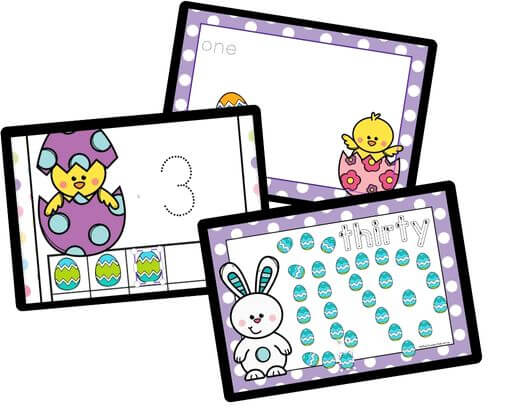
0-30 Number Mats - Easter

Easter Literacy
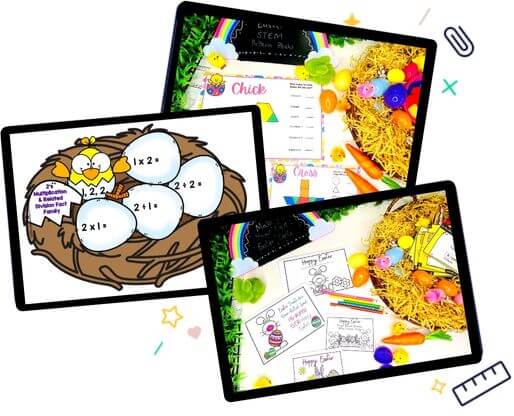
Easter Maths
Can't find what you're looking for?
Send us a request! Use this form to request a resource. Please give details of the learning area, topic, year level, curriculum links. We’ll be happy to take a look to see if we can fit it in. Unfortunately a request does not guarantee we will be able to make it!
"*" indicates required fields

